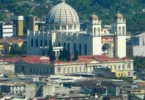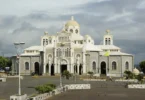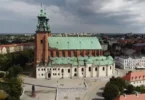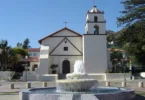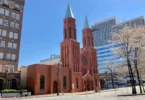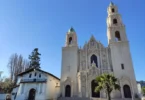Introduction
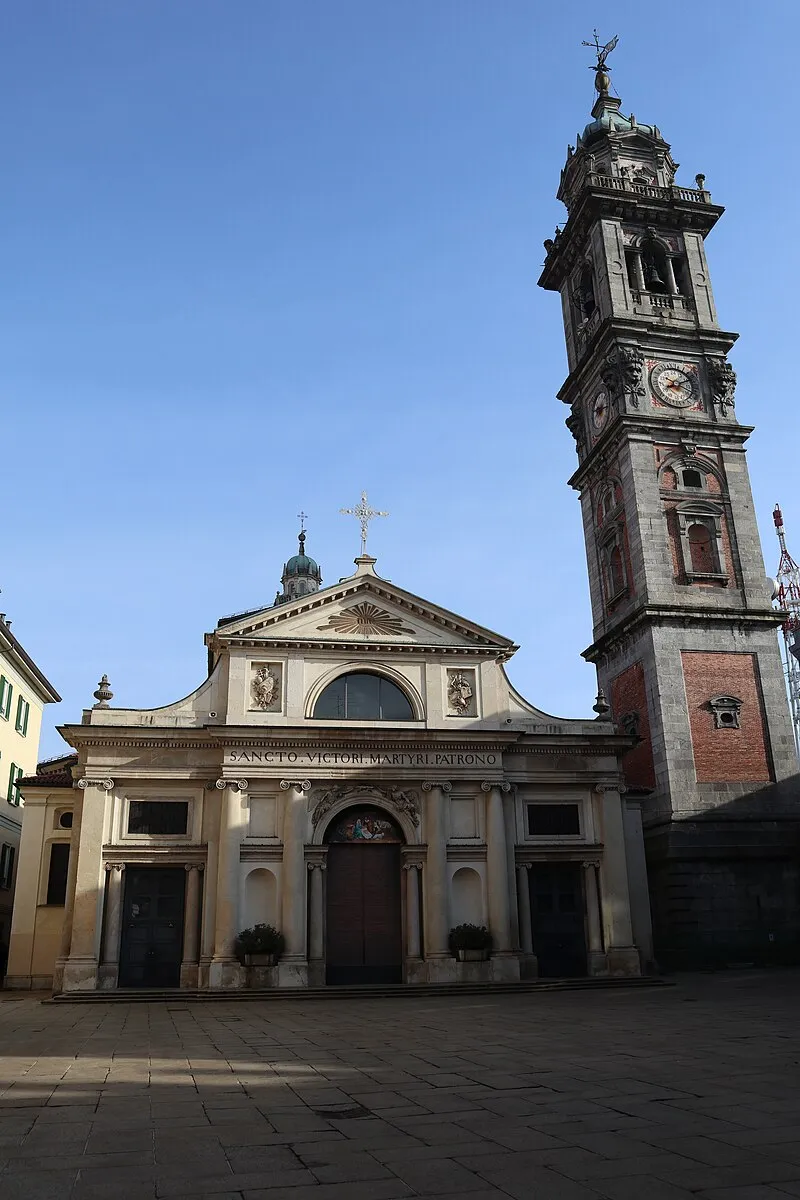
The Collegiate Basilica of San Vittore is a prominent Catholic place of worship located in the heart of Varese, Lombardy, Italy. This historic church is dedicated to Saint Vittore, the martyr of Milan, and holds significant religious importance within the Archdiocese of Milan. Recognized for its cultural and architectural value, the basilica has been granted the title of a minor basilica, a distinction that highlights its spiritual and historical significance. The basilica features a captivating blend of architectural styles, including the elegant Baroque bell tower that dominates the city’s skyline and the Gothic-style Baptistery of San Giovanni, which is an important element of the church’s heritage. The combination of these styles not only enriches the visual appeal of the church but also reflects its long and varied history. Over the centuries, the church has become an essential symbol of faith and devotion for the local community and beyond.
As a parish church within the Archdiocese of Milan, the Basilica of San Vittore is an active center of worship, attracting both locals and pilgrims who come to pay homage to the revered saint. Its rich history, artistic treasures, and architectural grandeur make it a key landmark in the city of Varese, embodying both spiritual and cultural heritage in the region of Lombardy.
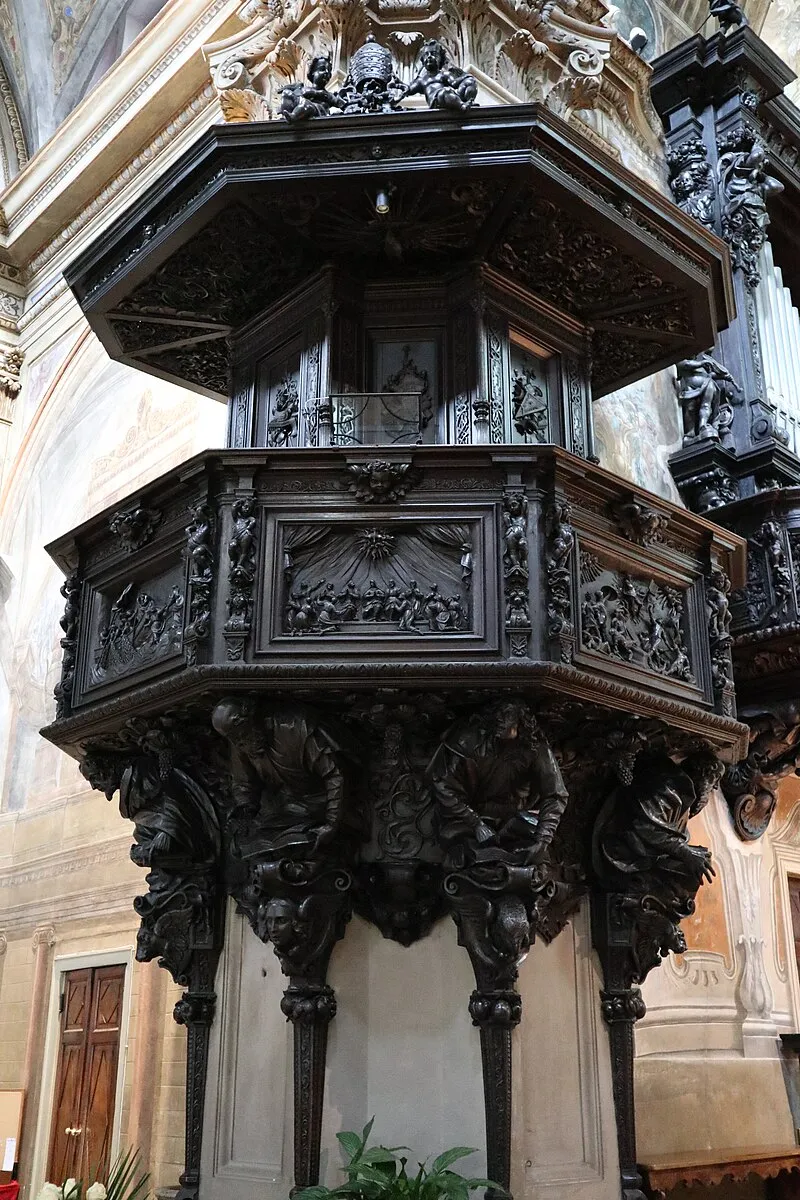
Construction and Notable Events
The Collegiate Basilica of San Vittore in Varese has a rich history that spans several centuries, beginning with its construction in the first half of the 16th century. Built on the site of a previous church—likely dating back to the 14th century—the basilica reflects a combination of architectural styles and phases of construction.
The Presbytery (16th Century)
The first part of the basilica to be constructed was the presbytery, which follows a purely Mannerist-Renaissance style. This section was built during the first half of the 16th century, on the foundations of an earlier medieval chapel. It was consecrated as early as 1542, marking the beginning of the church’s sacred significance.
The Body of the Church (1580–1625)
The main body of the church, including the transept and the pedestal, was designed by the renowned architect Pellegrino Tibaldi. Construction took place between 1580 and 1625, under the direction of Giuseppe Bernascone, who infused the structure with a Mannerist appearance. This phase saw the basilica take shape into its present form, with its impressive nave and expansive layout.
The Neoclassical Facade (1788–1791)
The final major addition to the basilica was the Neoclassical façade, which was created by Leopoldo Pollack, a pupil of the famous architect Piermarini. This new façade, completed between 1788 and 1791, brought a fresh architectural style to the basilica, providing a striking contrast to the Mannerist elements of the previous construction phases. Additionally, the Baroque-Mannerist bell tower, a key feature of the basilica, was built in stages over a long period, from the 17th to the 18th centuries. The bell tower was constructed to complement the church’s growing significance and grandeur.
Artistic Decoration and Contributions
The interior of the basilica is a testament to the artistic achievements of the region, particularly in the Baroque style. Beginning in the early 17th century, a harmonious decoration scheme was developed, with significant contributions from local artists. Notable painters from Varese and the surrounding areas, including Morazzone, Salvatore Bianchi da Velate, Federico Bianchi, Pietro Antonio Magatti, Giovanni Battista Ronchelli, and sculptors such as Bernardino Castelli and Elia Vincenzo Buzzi, worked on the church’s decoration. Their works contributed to the stunning Baroque aesthetic that graces the basilica today. In the 19th century, the decoration of the vaults and dome was completed with a neo-Baroque style, further enhancing the interior’s visual impact and reinforcing the church’s status as an artistic and religious landmark.
The Revered Reverend Carlo Rancati
The Collegiate Basilica of San Vittore also became closely associated with the Reverend Carlo Rancati, a prominent figure in Varese’s ecclesiastical history. Rancati was a distinguished doctor of canon and civil law, as well as an apostolic protonotary, vicar forane, and a well-known preacher, poet, and prose writer. In recognition of his contributions to the church, Rancati was promoted with pontifical authority to the illustrious collegiate church of San Vittore in Varese. He remained active in his role until his death in 1702.
The 1859 Cannon Attack
A significant event in the history of the basilica occurred on May 30, 1859, during the Second Italian War of Independence. The basilica and its bell tower became targets of cannon fire from the Imperial and Royal Austro-Hungarian Army, commanded by Field Marshal Karl von Urban. This attack was a retaliatory measure for the city’s refusal to pay a monetary sum as compensation for the Battle of Varese. One of the projectiles fired during this attack became lodged in the southern walls of the basilica. The cannonball was preserved and later highlighted by a commemorative inscription, turning it into a poignant symbol of the Risorgimento, the Italian unification movement.
Elevation to Minor Basilica
The Collegiate Basilica of San Vittore was officially elevated to the dignity of a minor basilica in May 1925 by Pope Pius XI. This recognition reflected its long-standing importance as a center of faith, history, and cultural heritage. The title of minor basilica further cemented its status as a key religious landmark in the region.
Architecture of Basilica of St. Victor Martyr, Varese, Italy
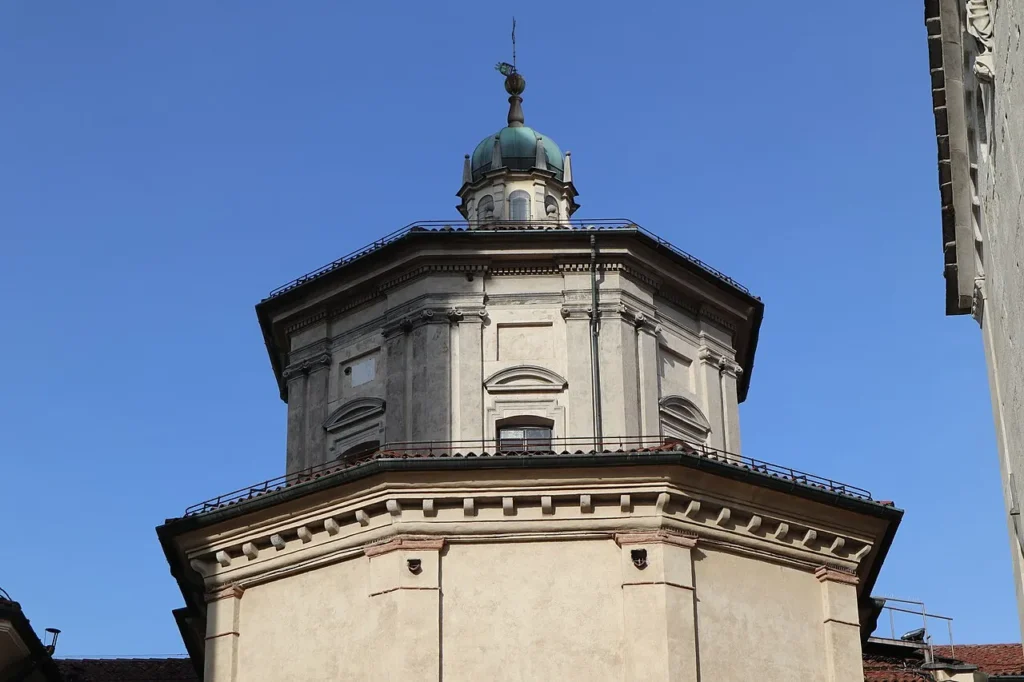
Architect: Pilgrim Pilgrims , Giuseppe Bernascone , Leopoldo Pollack
Architectural Style: Mannerist , Baroque and Neoclassical
The Collegiate Basilica of San Vittore is an exemplary manifestation of late 18th-century neoclassical architecture, enhanced with elements of Baroque and neo-baroque decoration. The church is structured according to a Latin cross plan, featuring the addition of side aisles, chapels, and a sacristy adjacent to the presbytery. Its design integrates classical principles with distinct architectural elements that give the building both monumental presence and artistic richness.
External Architecture
The exterior of the basilica is marked by a white marble façade, facing east, in strict adherence to the late 18th-century neoclassical style. The façade is characterized by its imposing, straight lines rather than curved or sinusoidal forms. The structure is framed by two full-width cornices and features a prominent rectilinear entablature. At the heart of this classical design is the dedication to Saint Victor inscribed on the façade. The elevation is supported by four massive Ionic columns, creating a grand, classical framework. Above, an attic with a square base is placed, where the only curves appear in the main window and lateral buttresses. The roof is triangular, directly inspired by the architecture of Greco-Roman temples. The architraves of the two lateral doors are surmounted by skylights, which extend toward the center and culminate in a round-arched portal. Above the portal, in the hanging spandrels, two angelic figures sculpted by Lodovico Pogliaghi can be found, enhancing the façade’s spiritual significance.
Dome and Lantern
The most striking architectural feature of the basilica is its octagonal tiburio (a drum-like structure enclosing the dome), which is designed in the Ionic style. This tiburio is supported by pilasters that are connected by an entablature (architrave and frieze), culminating in a cornice with special dentils. The structure’s sides are adorned with pairs of false pillars, giving each face a balanced appearance. On each side, a blind window is set, topped by a lunette and quadrangular niche. At the center of the dome, the lantern serves a functional and aesthetic role, designed to capture sunlight and distribute it inside the church. Unlike the plastered masonry of the tiburio, the lantern is sculpted from stone, surrounded by a balustrade and adorned with spheres and obelisks marking the corners. The lantern has eight round-arched windows, and curved bands connect the railing to the body of the lantern. The structure culminates in a small metal dome covered with a golden cross-shaped sphere, symbolizing divine presence.
Internal Architecture
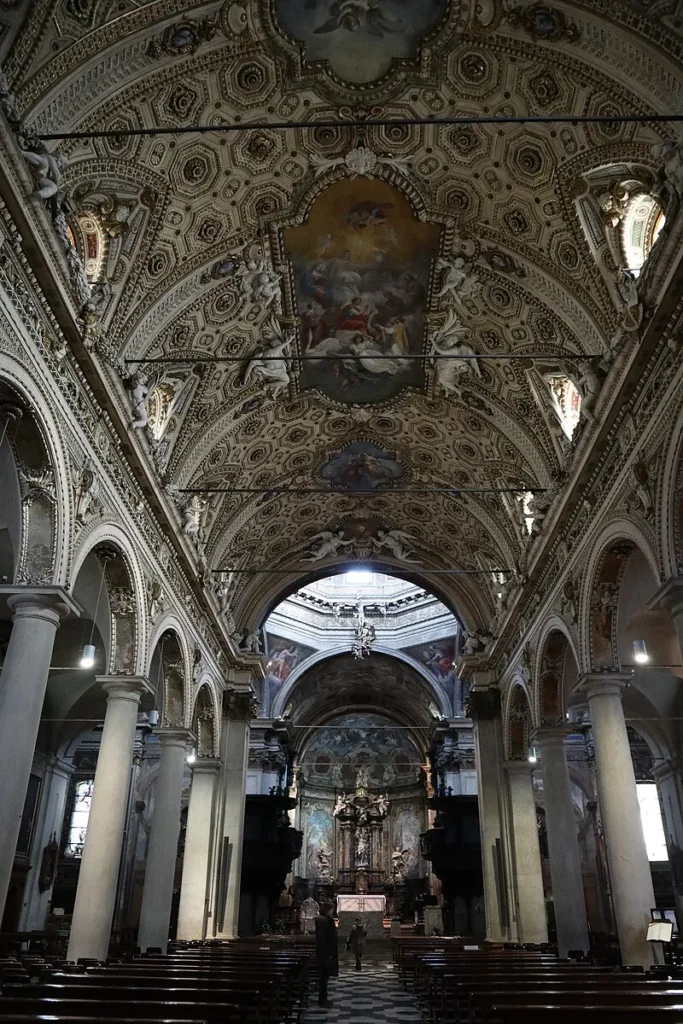
The internal architecture of the basilica reflects a blend of classical proportions and baroque decoration. The central nave’s vault was decorated in the neo-baroque style at the end of the 19th century. Frescoes by GB Zari from 1846 adorn the ceiling, including those of the Four Major Prophets in the pendentives and the Apostles and Evangelists in the dome. The stuccoes in the church were created by Lodovico Pogliaghi in 1929. The presbytery, with its polygonal plan, is the oldest part of the church, dating back to the 16th century. It features the high altar, a fine example of Lombard Rococo craftsmanship, executed by the Viggiuta sculptors Buzzi between 1734 and 1742. This altar was designed by Bartolomeo Bolla, a Milanese architect. The marble statues of the Risen Christ in the center, flanked by Angels, were designed by Pietro Antonio Magatti and executed by Elia Vincenzo Buzzi.
The presbytery’s vault is adorned with a depiction of the Glory of Saint Victor by Giovanni Ghisolfi (1675), while the Scenes of the Martyrdom of Saint Victor were painted by Salvatore Bianchi da Velate in 1692. The wooden pulpits from 1675 and two organs with choir stalls, executed between 1679 and 1690, add to the liturgical and visual richness of the space. All the furniture was crafted by the carver Bernardino Castelli. On either side of the presbytery are the two choir stalls, each with a Mascioni opus 485 pipe organ, constructed in 1936 using material from an earlier instrument built in 1906 by Luigi Bernasconi. This organ, with 63 registers and an entirely electric transmission, features a console located on the floor in the presbytery, complete with three keyboards, a pedal board, and plate controls for the registers. This remarkable combination of classical architecture and richly detailed Baroque elements makes the Collegiate Basilica of San Vittore an architectural masterpiece that blends aesthetic beauty with religious symbolism.
Side Chapels of the Collegiate Basilica of San Vittore
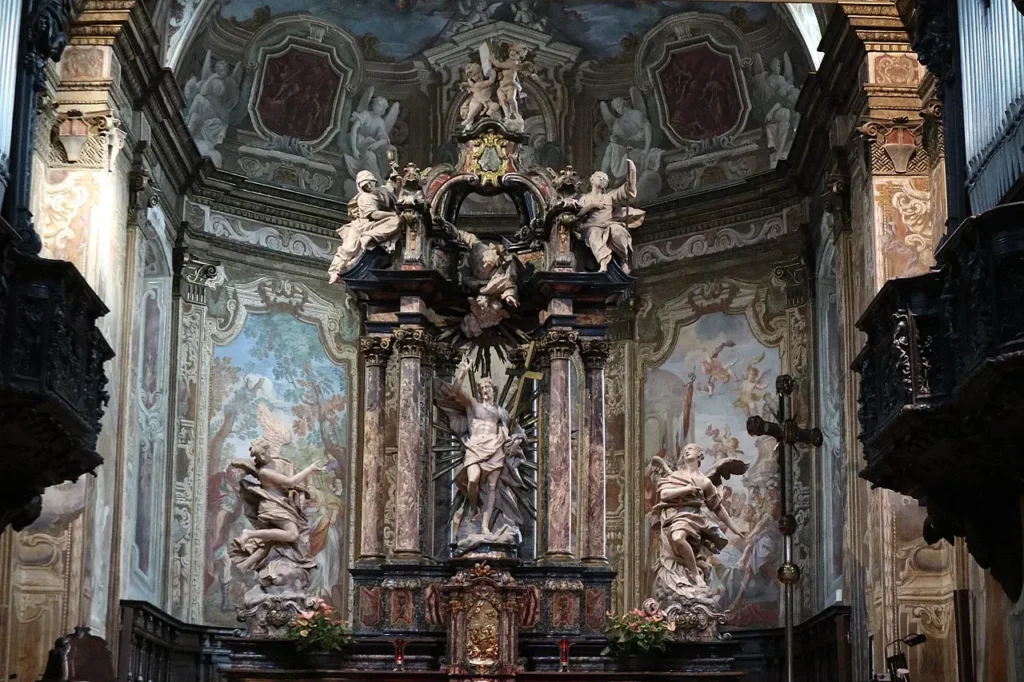
The side chapels of the Collegiate Basilica of San Vittore are home to a rich collection of Baroque art, showcasing works by notable Lombard artists from the 17th and 18th centuries. These chapels display paintings, frescoes, and sculptures that reflect the religious and cultural heritage of the period.
Chapel of San Gregorio
The Chapel of San Gregorio, located in the first position on the right side of the basilica, houses one of the masterpieces of the Lombard Baroque period. This chapel features a famous painting by Giovanni Battista Crespi, known as “Il Cerano,” titled Mass of San Gregorio (1615). The artwork is considered one of the finest examples of the Lombard school of painting during the time of Cardinal Federico Borromeo, a prominent figure of the Catholic Reformation. The chapel, with its stunning depiction of a sacred liturgical event, remains a key piece in understanding the evolution of religious art in Lombardy during the early 17th century.
Chapel of the Rosary
Located in the right arm of the transept, the Chapel of the Rosary is considered one of the basilica’s most significant artistic spaces. It is renowned for its intricate frescoes and paintings by Pier Francesco Mazzucchelli, also known as Morazzone, created between 1616 and 1617. The altar features a 15th-century image of the Madonna, surrounded by 15 copper tondi (medallions) that depict the Mysteries of the Rosary. The surrounding frescoes, including the Presentation in the Temple and Marriage of the Virgin, enhance the spiritual atmosphere of the chapel, while the vault depicts the Coronation of the Virgin, accompanied by music-making angels. Above the altar, a canvas by Pietro Antonio Magatti portrays St. Dominic receiving the Rosary. The altar frontal, a beautifully carved piece, depicts the Battle of Lepanto, a historical event, by the Genoese artist Bernardo Castelli (1557-1629).
Chapel of Maddalena
The Chapel of Maddalena, located before the left nave of the basilica, features more works by Morazzone. The paintings in this chapel depict scenes from the life of Saint Mary Magdalene. These works showcase Morazzone’s mastery in capturing the emotional depth of religious themes. His detailed brushwork and use of light and shadow add a sense of drama and reverence to the chapel.
Chapel of Saint Catherine of Alexandria
The Chapel of Saint Catherine of Alexandria contains a powerful 18th-century painting by Giovanni Battista Ronchelli, depicting the martyrdom of Saint Catherine. This chapel has held special significance since 2018, as it became the resting place for the remains of the Venerable Carlo Sonzini, a notable religious figure. The chapel’s atmosphere is one of solemn devotion, enhanced by the poignant imagery of Saint Catherine’s sacrifice.
Chapel of Santa Marta
Situated in the right arm of the transept, the Chapel of Santa Marta features a copy of the Deposition, a Mannerist work by Simone Peterzano, an artist who was known for his association with Caravaggio. The chapel also contains a series of frescoes from the late 17th century, painted by Federico Bianchi and Pietro del Sole. These frescoes depict various episodes from the life of Saint Martha, including her triumph over the dragon of Tarascon by sprinkling it with holy water, her encounter with Jesus Christ at the gates of Bethany, and her actions at the tomb of her brother, Lazarus. Other scenes include Christ in the house of Martha and Mary, the Resurrection of Lazarus, and the Risen Christ appearing to the pious women. The frescoes on the vault illustrate the Death, Ecstasy, and Passing of Saint Martha, symbolizing her spiritual journey and ultimate ascent into heaven.
Madonna Addolorata Sculptural Group
In addition to the paintings and frescoes, the basilica is home to a notable sculptural group: the Madonna Addolorata (Our Lady of Sorrows). This painted sculptural work is a poignant depiction of the Virgin Mary in her sorrowful state, mourning the suffering of Christ. The group’s emotional intensity and exquisite craftsmanship make it a powerful visual representation of the themes of grief, compassion, and maternal love, which resonate deeply within the context of the basilica’s rich spiritual and artistic heritage.
Feast Day
Feast Day : 08 May
The feast day of Saint Victor is celebrated on May 8th. Saint Victor was a martyr who lived in the 3rd century and is honored by the Catholic Church for his steadfast faith. He is the patron saint of Varese, Italy, and his relics are housed in the Collegiate Basilica of San Vittore. His feast day is a significant occasion, with religious celebrations, processions, and special liturgies held in his honor, particularly in the region surrounding Varese.
Church Mass Timing
Monday : 8:30 AM., 10:00 AM.
Tuesday : 8:30 AM., 10:00 AM.
Wednesday : 8:30 AM., 10:00 AM.
Thursday : 8:30 AM., 10:00 AM.
Friday : 8:30 AM., 10:00 AM.
Saturday : 8:30 AM., 10:00 AM.
Church Opening Time:
Monday : 7:30 am – 12:00 pm., 2:30 pm – 7:30 pm.
Tuesday : 7:30 am – 12:00 pm., 2:30 pm – 7:30 pm.
Wednesday : 7:30 am – 12:00 pm., 2:30 pm – 7:30 pm.
Thursday : 7:30 am – 12:00 pm., 2:30 pm – 7:30 pm.
Friday : 7:30 am – 12:00 pm., 2:30 pm – 7:30 pm.
Saturday : 7:30 am – 12:00 pm., 2:30 pm – 7:30 pm.
Sunday : 7:30 am – 12:30 pm., 3:30 pm – 7:30 pm., 8:30 pm – 10:00 pm.
Contact Info
Address :
Piazza Canonica, 7, 21100 Varese VA, Italy.
Phone : +39 0332 236019
Accommodations
Connectivities
Airway
Basilica of St. Victor Martyr, Varese, Italy, to Aeroporto “Ferrarin” Venegono Inferiore, distance between 24 min (12.2 km) via SP233.
Railway
Basilica of St. Victor Martyr, Varese, Italy, to Gazzada Schianno Morazzone 21045 Gazzada Schianno, distance between 13 min (6.5 km) via Via Leopoldo Gasparotto/SS341.


